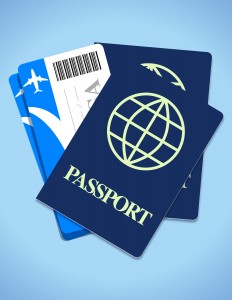In this lesson we talk about traveling. Specifically, traveling by airplane. The general procedure to travel by airplane is rather simple in our country. But what happens if you are planning to fly to other countries like Europe, for example?
Here we have a few tips that can help you in your next overseas trip.
Research flights online. Flight search engines compare fares available at multiple airlines, online travel agencies, or both, and then sort them by price. I’ve tested a number of them on a variety of journeys, both transatlantic and within Europe. Surprisingly, I’ve seen that the industry’s big sites — like Travelocity.com and Expedia.com — can miss several good-value results that other sites turned up.
Airfares flex like crazy — so buy your tickets at the right time. There can be up to 10 different pricing levels for each flight, fares fluctuate throughout the day, and cheap tickets are limited to a few seats. To get the best fare, it’s wise to start looking for tickets four to six months before you fly — as soon as you’re able to commit to a firm date.
Be ready to buy. Given how erratic airline pricing can be, you want to be ready to pounce on a good fare when you see it. Waiting to talk with your travel partner could cost you a good fare. As you delay, dates sell out and prices generally go up. Figure out in advance what constitutes a good fare, then grab it when you find it. Long gone are the days when you or your travel agent could put several different reservations on hold while you made a decision.
Consider flying into one city and out of another. It’s probably been 10 years since I flew in and out of the same European city. Think cleverly about making what used to be called an “open jaw” itinerary — now dubbed a “multiple-city” trip. Since it rarely makes sense to spend the time and money returning to your starting point, this can be very efficient.
Review your ticket information carefully when you book. Double-check your dates, destinations, and exact spelling of your name. Confirm that the name on your reservation exactly matches the one on your passport, which can be an expensive hassle to correct later. A simple second look can give you a chance to fix any mistakes and save you enormous headaches down the road.
Bring a printout of your e-ticket and your passport. Even though most airlines no longer issue paper tickets, it’s always smart to bring the printed receipt with you in case there are complications at the airport. Be sure the receipt has both your e-ticket number and the airline’s reservation code. When flying to Europe, you’re required to show your passport to the airline before boarding the flight.
As you can see, there are many factors about traveling to Europe that you need to keep in mind. These tips are not indispensable, but they just might help you out if you have any complication at the airport. And they could also save you the headache of figuring out what to do. As they say, an ounce of prevention is worth over a pound of cure.
Part of this article was taken from
Rick Steves’ Europe-from the back door- Steves, Rick “Booking flights to Europe
Fecha de consulta: 06-Feb-2014. archive.ricksteves.com URL: https://archive.ricksteves.com/plan/tips/fly-to-europe.htm



0 Comentarios